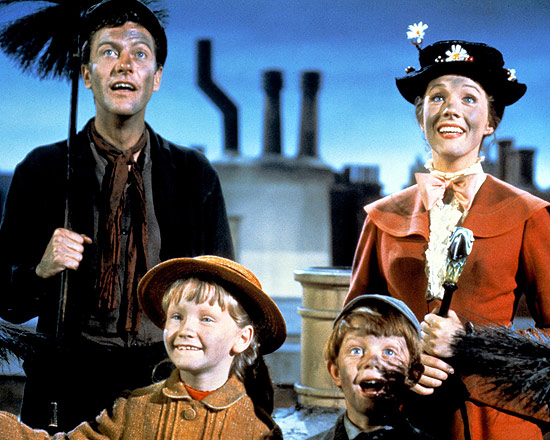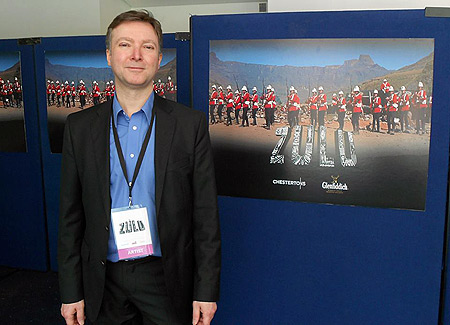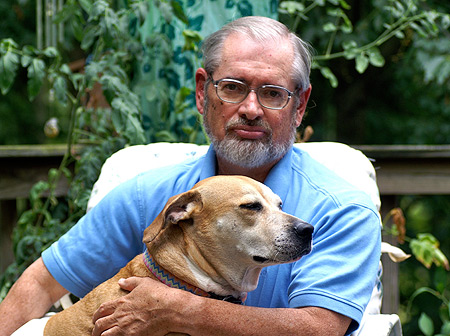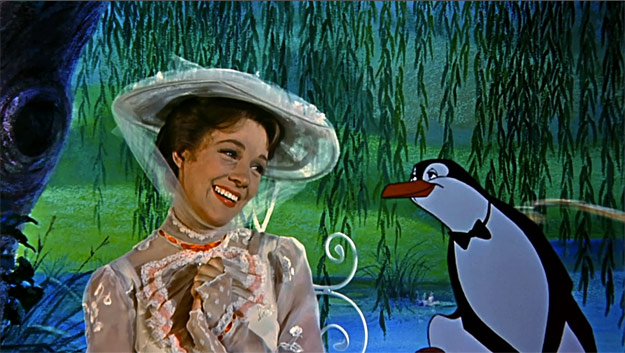“The most wonderful, the most delightful entertainment of your life!”
The Digital Bits is pleased to present this TWO PAGE retrospective column commemorating the golden anniversary of the release of Mary Poppins, Walt Disney’s popular and award-winning musical-fantasy starring Julie Andrews and Dick Van Dyke. [Read on here…]
The Bits celebrates the occasion with this retrospective featuring an interview segment with some film historians who discuss the movie and its enduring appeal.
We also offer a compilation of box-office data that places the movie’s performance in context, quotes from movie critics, production & exhibition information, and a list of selected presentations from its original first-run release in theaters.
MARY POPPINS NUMBER$
- 1 = Number of theaters showing the movie during opening weekend
- 1 = Rank among Disney’s top-grossing movies of all time at close of run
- 1 = Rank among top-grossing movies of 1965 (calendar year)
- 2 = Rank among top-grossing movie musicals (adjusted for inflation)
- 4 = Rank among top-grossing movies of the 1960s
- 4 = Rank on all-time list of top-grossing movies at close of original run
- 5 = Number of Academy Awards
- 13 = Number of Academy Award nominations
- 25 = Rank on current list of all-time top-grossing movies (domestic, adjusted for inflation)
- 36 = Rank among top-grossing movies of 1964 (calendar year)
- 554 = Rank on current list of all-time top-grossing movies (domestic)
- 8000 = Approximate number of theaters that played the movie during original release
- $4.4 million = Production cost
- $28.5 million = Domestic box-office rental (original release)
- $33.8 million = Production cost (adjusted for inflation)
- $45.0 million = Domestic box-office rental (original release + re-releases)
- $102.3 million = Domestic box-office gross (original release + re-releases)
- $345.5 million = Domestic box-office rental (adjusted for inflation)
- $637.2 million = Domestic box-office gross (adjusted for inflation)

THE INTERVIEW
This segment of the article features a Q&A with Sheldon Hall, Kim Holston, Matthew Kennedy, Jeff Kurtti, and Charles Solomon. The interviews were conducted separately and have been edited into a “roundtable” format.
Sheldon Hall is a senior lecturer in film studies at Sheffield Hallam University, UK, and is co-author (with Steve Neale) of Epics, Spectacles, and Blockbusters: A Hollywood History (Wayne State University Press, 2010). He also is the author of Zulu: With Some Guts Behind It–The Making of the Epic Movie (Tomahawk Press, 2005) and co-editor (with John Belton and Steve Neale) of Widescreen Worldwide (Indiana University Press, 2010). Sheldon participated in the recording of an audio commentary track for DVD and Blu-ray releases of Zulu and Once Upon a Time in the West.

Kim Holston is the author of Movie Roadshows: A History and Filmography of Reserved-Seat Limited Showings, 1911-1973 (McFarland, 2013). Kim is a part-time librarian in the Multimedia Department of Chester County Library (Exton, PA) and lives in Wilmington, DE, with his wife Nancy and a menagerie of pets. In addition to Movie Roadshows, he is the author of various film and performing arts books, including Richard Widmark: A Bio-Bibliography (Greenwood Press, 1990), Starlet (McFarland, 1988), Susan Hayward: Her Films and Life (McFarland, 2002), and (with Warren Hope) The Shakespeare Controversy (McFarland, 2nd ed., 2009), and Attila’s Sorceress (New Libri Press, 2014). He is presently at work with Tom Winchester on a follow-up to their 1997 book, Science Fiction, Fantasy and Horror Film Sequels, Series and Remakes.

Matthew Kennedy is the author of Roadshow! The Fall of Film Musicals in the 1960s (Oxford University Press, 2014). He is a writer, film historian, and anthropologist living in San Francisco. He has written several other books, including Marie Dressler: A Biography (McFarland, 1999, paperback 2006), Edmund Goulding’s Dark Victory: Hollywood’s Genius Bad Boy (University of Wisconsin Press, 2004), and Joan Blondell: A Life between Takes (University Press of Mississippi, 2007). He is the film and book critic for the respected Bright Lights Film Journal and currently teaches anthropology and film history at the City College of San Francisco and San Francisco Conservatory of Music.
Jeff Kurtti is one of the leading authorities on The Walt Disney Company and its history. The author of more than 25 books, including Disneyland Through The Decades (Disney Editions, 2010), Kurtti worked for Walt Disney Imagineering, the theme park design division of The Walt Disney Company, and then for the Corporate Special Projects department of Disney. More recently he was creative director, content consultant, and media producer for The Walt Disney Family Museum. Jeff was one-half of Kurtti-Pellerin Productions, which produced value-added content for home-video releases (including material for several editions of Mary Poppins). He was also a producer on the feature documentary The Boys: The Sherman Brothers’ Story.
Charles Solomon is a lecturer at the UCLA School of Theater, Film and Television and is an animation critic and historian. He has written on the subject of animation for The New York Times, Los Angeles Times, Rolling Stone, TV Guide, Variety, and others. He has written numerous books, including Enchanted Drawings: The History of Animation (Random House, 1994), The Art and Making of Peanuts Animation: Celebrating Fifty Years of Television Specials (Chronicle, 2012) and The Toy Story Films: An Animated Journey (Disney Editions, 2012).

--
Michael Coate (The Digital Bits): In what way is Mary Poppins worthy of celebration on its 50th anniversary?
Sheldon Hall: It’s a well-loved and extremely popular movie, widely regarded as one of Disney’s finest (mostly) live-action films.
Kim Holston: It has timeless appeal. Parents are still renting/buying it for their children. (When my son Michael was around five he requested and received for Easter a red and white-striped jacket and white pants similar to what Dick Van Dyke wore in the Jolly Holiday number. We had no difficulty enrolling him in dance school.) It was from the era when virtually every movie musical’s songs were good or great. Chim Chim Cher-ee won the Oscar but any number of others in the film were as worthy.
Matthew Kennedy: It’s worthy on several counts.
The visual effects are absolutely super and age very well. They’re in strong contrast to so many movie comic book franchises with their stomach-flipping swoops and epic designs, starting with an eyeball and zooming out out out until we’re in space. It all looks so cold and bloodless and fake. In contrast, Mary Poppins’ magic is in flying that looks like flying and seamless live action and animation. It also never loses sight of being an intimate story centered on two kids. Poppins comfortably wears its sweetness and the modesty of its storytelling.
Original musicals for the screen were all but extinct when Mary Poppins came along, so having it work so well was something of a miracle. Within a decade, attempts at original musicals would flop badly with Goodbye, Mr. Chips and Lost Horizon, among others. It’s telling that My Fair Lady, a lumbering film adaptation of a Broadway musical if ever there was one, took most of the Oscars in competition with Poppins that year. I suspect there is more love today for Poppins than Lady.
Poppins launched Julie Andrews’ career in a very big way. It’s populated by delightful character actors such as David Tomlinson, Reta Shaw, Hermione Baddeley, Elsa Lanchester, and Ed Wynn. It’s chock-a-bloc full of good songs by the Sherman Brothers—Chim Chim Cher-ee, A Spoonful of Sugar, Let’s Go Fly a Kite, and Supercalifragilisticexpialidocious.
Jeff Kurtti: Even fifty years later, Mary Poppins remains a fresh, fun, and remarkable film on its own merit—even without any cultural and nostalgic patina. The performances are winning, the direction is brisk, the technical craftsmanship is solid, the story is meaningful, and (of course) the music weaves all the elements together with a timeless richness and skill.
Charles Solomon: It’s one of Walt Disney’s last films and one that clearly meant a great deal to him, given the years he spent obtaining the rights to the book. I don’t know if the story that he promised his daughter he would film the book is true, and unfortunately we can’t ask Diane. Joe Grant recalled that his wife read the book to Diane and Sharon when Walt would bring them when he visited. Certainly all the time he spent pursuing it, and the attention and money he poured into it, show that it was a “passion project” for him.
Coate: Can you recall your reaction to the first time you saw Mary Poppins?
Hall: I saw it for the first time on a UK cinema rerelease in the mid-70s, possibly 1973 or 1974. Even then, at the age of nine or ten, I found it a little too saccharine and preferred Bedknobs and Broomsticks, which was in some respects the Disney studio’s attempt to repeat its success but which I had seen earlier. But as a fan of Disney movies and of musicals generally I enjoyed Mary Poppins well enough. I had a long wait to see it again, as it wasn’t shown on British network television until Christmas 1984.
Holston: My mother and I saw it on a weekday evening in Philadelphia. It was a minor adventure as we had to take the train from Marcus Hook into Center City and walk to the Midtown Theater. The Midtown was often a roadshow venue, but Disney didn’t do reserved-seat films until 1967’s The Happiest Millionaire. Mary Poppins could have been a roadshow. Add a 10-minute intermission to the 139-minute feature and.... I soon had the album and played it many times.
Kennedy: Mary Poppins is one of my very first movie memories. It came out when I was seven. I remember being particularly delighted with the I Love to Laugh number, giggling right along with the actors. Feed the Birds also made a deep impression. I remember being thoroughly swept away by the music, fantastic look of the film, and the charms of a youthful Julie Andrews. What child wouldn’t want her for a nanny?
Kurtti: I was five years old, and I’m told that I sat without moving for two hours and twenty minutes, turning when the film ended to ask, “Can we see that again?” From that moment on, I wanted to know everything about Walt Disney and all of his work. The childhood obsession started by Mary Poppins became a career.
Solomon: I remember enjoying the film as a little boy: The animation/live action combinations were enchanting, and who can resist Julie Andrews’ charm? But it didn’t mesmerize me the way Fantasia and Sleeping Beauty did.
Coate: Where does Mary Poppins rank among Disney films?
Hall: If you mean artistically, it is one of the studio’s better 1960s films, despite—or perhaps because of!—Dick Van Dyke’s atrocious mock-Cockney accent (a standing joke on this side of the Atlantic).
Holston: Personally, I’d rank Mary Poppins at #2 with 20,000 Leagues Under the Sea my favorite live-action Disney film.
Kennedy: I’m far from an expert on Walt Disney’s films, but it’s probably the most successful and acclaimed made in his lifetime. Its competitors for “best” would be animated—Snow White and the Seven Dwarfs, Fantasia, and Disney Renaissance hits The Little Mermaid and The Lion King. With Pixar Disney made Finding Nemo and The Incredibles. Mary Poppins holds a special place, not only because it’s predominantly live action, but because it has a certain came-out-of-nowhere quality. It was an altogether unexpected triumph. The only live action-animated hybrid that favorably compares to Mary Poppins is Who Framed Roger Rabbit.
Kurtti: Mary Poppins represents the pinnacle of Walt Disney as a filmmaker. Within it, every element that he built his career and fame on can be seen in fine form: storytelling, animation and art, music, technology, and deep understanding of the audience and flawless intuition about what would connect with them. Another of Walt’s great skills was assembling amazing creative teams—and for this film the talent he put together was truly one-of-a-kind.
Coate: Most musicals during the era in which Mary Poppins was produced were roadshows. Do you have any thoughts on Disney’s decision not to have Mary Poppins exhibited as a roadshow (in the United States, at least) on original release?
Hall: I’d guess this marketing decision was due to a number of factors. Disney’s only previous roadshow releases, Fantasia and the independently-produced 70mm biblical epic The Big Fisherman, had not been very well received commercially and had lost money. All three had to some extent been sold on their technological innovations (stereophonic sound in the case of Fantasia), and while Mary Poppins was replete with special effects it was not photographed or presented in a large-format process such as Super Technirama or Super Panavision (though it did have magnetic stereo prints for some cinemas). There were also a number of competing roadshow films in circulation at that time, most of which did utilize large formats, and it may simply have seemed to be tempting fate to compete with them either for audiences or for roadshow venues. In addition, Mary Poppins was aimed at children and family audiences rather than adults, and it may have seemed that the pattern of reserved seats, separate performances and raised prices was not suited to this market. Of course, if it had been produced after The Sound of Music rather than before, the film’s distribution pattern might well have been different! But the roadshowing of United Artists’ Chitty Chitty Bang Bang and Fox’s Doctor Dolittle, both comparable generically as musical fantasies, was not notably successful, nor was Disney’s own family musical The Happiest Millionaire, so Disney’s original instincts may have been correct. In the UK, incidentally, Mary Poppins was not roadshown but was generally released with advanced prices, though there were isolated reserved-seat engagements in London’s West End on both the initial release and the 1973 re-issue.
Holston: It’s only an opinion, of course, but I imagine Disney felt his youthful audience would be better served by a film running continuously and costing less than a roadshow. Second, there would be a clamor for general release by parents and children in the suburbs and small towns. Third, for a roadshow Disney would have to line up large urban theaters well in advance because of other roadshows taking up space. As we know, Disney didn’t do roadshows until 1967’s The Happiest Millionaire. It might have been a financial or a “technical” decision not to put a new distribution system into place.
Kennedy: Films appealing to young kids weren’t often roadshowed in the United States, and Disney didn’t have the administration of Fox or MGM for roadshow distribution. When Mary Poppins proved to be so phenomenally successfully, Disney got on the bandwagon and released The Happiest Millionaire, a film slightly more adult in content than Mary Poppins, as a roadshow. It flopped. The standard release Jungle Book came out at the same time and did far better. Disney didn’t have good luck with roadshows.
Coate: In what way did Saving Mr. Banks contribute to the legacy of Walt Disney and Mary Poppins?
Kennedy: Hard to say how Saving Mr. Banks will affect the legacy of Walt Disney and Mary Poppins. It tidies up a relationship between Disney and P.L. Travers that was by accounts highly adversarial. Two strong-willed people have their own ideas about how it should be adapted to the screen, and apparently Disney won most of the battles. Travers never came to embrace the film—disdaining the animation and for making her magical nanny so likable and chipper. Saving Mr. Banks, in contrast, succumbs to a happy-ish ending as Disney’s Mary Poppins, not her own, heals some of her childhood wounds. How much more interesting it might have been had it stuck closer to accuracy, with Travers permanently embittered by the Disneyfication of her books. It might have been a darker, more contemplative film about art, commerce, ownership, and creativity. Saving Mr. Banks is not shamelessly “feel good,” but Disney’s corporate interests are on rather clear display throughout.
Kurtti: Not much. It was not a good film. It presented a strangely erroneous and false image of the creation of Mary Poppins. Walt and the filmmakers were flatly shown as clueless buffoons, and Travers as an unredeeming harpie. Maybe it got some people to look at the film again—but then to mistakenly believe that Mrs. Travers had anything to do with the movie’s greatness, beyond writing the book on which it is based.
Solomon: I thought Saving Mr. Banks was half a good movie: Emma Thompson is always wonderful, and I thought the actors playing the Sherman Brothers were quite good. But how did Travers go from the Australian waif to the primmest woman in the British Empire? It did make clear how long and hard Walt worked to get the rights to Mary Poppins, however.
Coate: What is the legacy of Mary Poppins?
Hall: I’m not at all sure—Julie Andrews’ subsequent career?
Holston: The memorable songs, the introduction of Julie Andrews to the moviegoing audience, paving the way for exceptional mingling of live action and animated figures. It proved that a movie from out of nowhere, so to speak, could outshine the heralded super musical of the year: My Fair Lady. Mary Poppins cost less to make and grossed more. As you know, there was media shock that Audrey Hepburn did not receive a Best Actress nomination but that Andrews did—and won. A superstar was born (after years on the stage).
Kennedy: Mary Poppins the movie has become a cultural touchstone beyond the source books by P.L. Travers. Everyone, it seems, remembers seeing it as a child. And only a highly familiar and beloved film could be the inspiration for a “making of” treatment such as Saving Mr. Banks. It has also found seemingly inexhaustible life as a stage production. Like Harry Potter, it shrewdly plays with our undying desire to experience joy and magic. And it deftly plays on our yearning for a warm and love-infused family. The Banks are dysfunctional until Mary sets them on the right course. It’s a common theme in the movies—an outsider has a powerful, life changing effect on a family. Boudu Saved from Drowning, Sitting Pretty, and E.T. come to mind. Mary Poppins played on that deeply emotional theme with great skill. It feels like Mary Poppins will live forever.
Kurtti: The fact that we are still discussing it fifty years on is evidence of its importance and lasting value. For Disney and other film studios, it represented the continued viability of original screen musicals for a decade afterward, and many efforts since have tried to duplicate its winning result—without much success. Like so many films such as The Wizard of Oz, Singin’ in the Rain, and The Sound of Music, something about the film’s mix of transporting fantasy, memorable characters, unforgettable music, and essential humanity will continue to speak to audiences for decades to come.
Solomon: Mary Poppins set a standard for animation/live action combinations that wouldn’t be surpassed until Roger Rabbit decades later. It also remains a charming and entertaining film in its own right.
--END of Interview-- Continue onto Page 2 (link here) for more.




